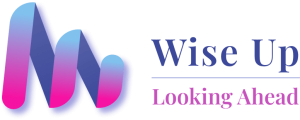
In a healthcare landscape facing increasing demands from an ageing population, a promising trend is emerging: technology that enables older adults to assess their own cognitive and physical health—potentially identifying issues early while reducing strain on medical systems.
Digital Cognitive Assessment: A Case in Point
A recent study published in The Journals of Gerontology illustrates this approach. Researchers validated an online tool called the Brain Health Assessment (BHA), which allows older adults to self-administer tests for early signs of cognitive decline.
The study, conducted at Baycrest Health Sciences Centre in Toronto, found that this self-administered online assessment was nearly as effective as professionally administered screening tests in identifying amnestic mild cognitive impairment (aMCI), often an early stage of Alzheimer’s disease.
“The BHA is a short, self-administered, online cognitive measure with utility as a screening measure for aMCI in community-dwelling older adults,” the researchers noted. “Our results provide support for the validity of the BHA as a cost- and time-efficient tool that can assist in streamlining pre-assessment for aMCI by health care practitioners.” (Paterson et al., 2021)
This marks a significant shift in approach. Instead of requiring a specialist visit for initial screening, older adults can now complete the assessment at home, with results guiding whether further medical evaluation is needed.
The Broader Movement Towards Self-Assessment
This trend isn’t limited to cognitive health. Wearable technology has evolved far beyond simple step counters, now acting as sophisticated health-monitoring systems tracking multiple vital signs.
Apple Watches and similar devices now offer ECG functionality, irregular heart rhythm notifications, and blood oxygen monitoring. These features can alert users to potential cardiovascular issues that might otherwise go undetected until a serious event occurs.
Devices like the Withings ScanWatch track sleep patterns, detect sleep apnoea symptoms, and monitor heart rate variability—all markers that can highlight emerging health conditions before they become urgent.
Japan’s Smart Toilet Revolution
Perhaps the most intriguing self-assessment technology comes from Japan, where companies are developing toilets that analyse waste to offer real-time health insights.
Toto, Japan’s largest toilet manufacturer, is developing toilets that can analyse urine for glucose levels—potentially alerting users to pre-diabetic conditions. Their “Wellness Toilet” concept aims to track key health metrics over time and send data directly to users’ smartphones.
Likewise, researchers at the Tokyo Institute of Technology have developed toilet systems capable of measuring weight, body fat, and blood pressure while the user sits down.
While these technologies may seem unusual to Western sensibilities, they represent a logical progression in health monitoring—gathering data during routine activities rather than relying on dedicated appointments.
Benefits and Limitations
The primary benefit of these self-assessment technologies is early detection. Conditions like cognitive decline, heart disease, and diabetes often develop gradually. Subtle symptoms may be missed during infrequent doctor visits, but can be picked up through continuous, passive monitoring.
They also help reduce strain on the healthcare system. If the BHA indicates normal cognitive function, for instance, an individual might avoid a specialist appointment—freeing resources for those in greater need.
However, these tools do have limitations. They are not substitutes for formal medical diagnoses, and users may misinterpret results or experience unnecessary anxiety over false positives. Access and digital literacy are also challenges, especially for the oldest adults who might benefit most.
Looking Ahead
As these technologies mature, greater integration with healthcare systems is likely. Rather than functioning independently, self-assessment tools could feed data directly to GPs, allowing for more informed consultations and timely interventions.
The COVID-19 pandemic accelerated telehealth adoption and created infrastructure that can incorporate home-monitoring data into virtual appointments. This convergence points to a future where older adults monitor their health at home and consult professionals when needed—enhancing independence, quality of life, and healthcare efficiency.
Rather than replacing human care, these technologies may support and strengthen it—ensuring that when older adults do interact with healthcare providers, those conversations are more informed, targeted, and effective.

